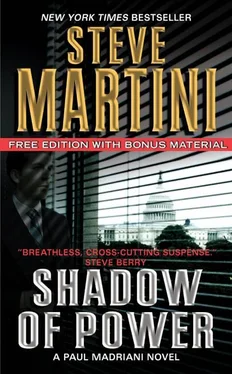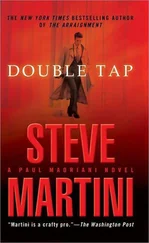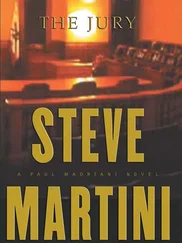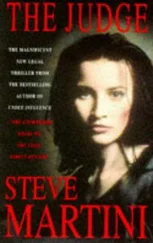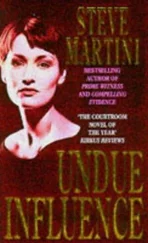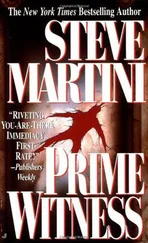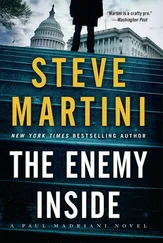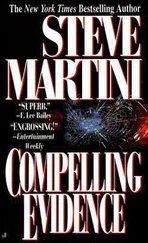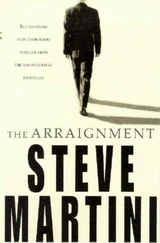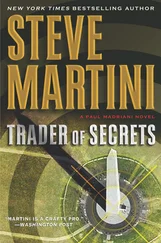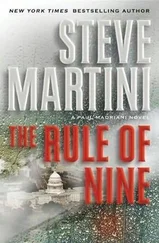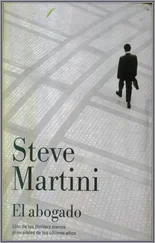“It wasn’t German. It was Dutch. It’s part of the old Dutch West Indies, the ABC islands-Aruba, Bonaire, and Curaçao.”
“I’ve heard of Aruba,” says Harry. “Vacation island.”
“Yeah, and a young American girl disappeared down there a while back. It was all over the news.”
“That’s right.”
I have opened up a larger map. Harry is still looking over my shoulder.
“What the hell?” he says. “Is that it?”
I nod.
“That’s as far away as you can get and still be on an island,” says Harry.
He’s right. Curaçao is just off the coast of Venezuela, the absolute tail end of the Antilles.
Next morning, early court call, neither Harry nor I have time to be looking at maps. Tuchio is beginning his run for the finish, bringing out the big guns.
He starts with his fingerprint expert. For the better part of a day, using charts, magnified photographs of the full set of Carl’s fingerprints taken at the time he was booked after his arrest, and comparing them to the partial prints lifted from the entry-hall floor of Scarborough’s hotel room, the witness explains the art of fingerprint identification to the jury.
He tells them that based on studies of the millions upon millions of fingerprints classified over the last nearly one hundred years, no two sets of prints from different individuals have ever been found to be identical. In addition to being unique, they are immutable. Except in the event of physical injury, fingerprint patterns do not change over a person’s lifetime.
The witness explains that comparison between known fingerprints taken from a known individual and those found at a crime scene turn on the analysis of ridge characteristics, known as minutiae, as well as the location and proximity of these characteristics one to another.
The testimony, questions and answers, drones on for hours. Tuchio risks putting the jury to sleep with evidence of what everyone in the courtroom already knows to be fact: The fingerprints at the murder scene belong to Carl.
Asked how the small pinkie print landed on the handle of the hammer, the witness testifies that based upon photographs taken by police of the hammer’s location on the floor, it appeared that the fingerprint in question was made at the same time as the other prints on the floor. According to the testimony, the defendant’s contact with the handle caused it to move several inches away, accounting for the later gap between the print of the third finger of Carl’s right hand on the floor and the fourth finger, the pinkie print on the handle. Nonetheless, the fingerprint in question, the one on the hammer’s handle, is sufficiently clear to identify it conclusively as belonging to the defendant.
Tuchio turns the witness over to me. I pass on him without a single question. It is, after all, exactly what Carl told the police when they questioned him, the same story he told Harry and me the first time we met him.
The judge looks up at the clock on the wall. It’s approaching four. Friday afternoon, and Quinn decides that’s it for the week. He cuts some slack and allows the jury to go home early. Monday will be a big day, the intimate details of death. The state is scheduled to bring on its medical examiner.
On the way to the parking lot, Harry and I shake the last two reporters about two blocks out. By now they know we’re not going to say anything, so they take a few file shots of our backsides and retreat toward the courthouse.
Harry is holding a note delivered to us in court by one of our secretaries. It’s an e-mail from Herman back in D.C. While we don’t have a street or an address, we are now pretty sure of the general whereabouts of Arthur Ginnis.
I have sent three successive letters and left numerous telephone messages for Ginnis during the time since my meeting with Trisha Scott in Washington. I offered to converse by phone, or if he wished I would travel once more to Washington at the justice’s convenience. I told him that I was representing the defendant in the murder of Terry Scarborough and that I would appreciate it if I could speak to him just briefly. To date I have received no reply.
When Herman arrived in D.C., he made a polite phone call, got through to a clerk in Ginnis’s office, told the woman what it was about-an ongoing criminal trial in California, a capital case, an urgent matter-and requested a brief meeting with the justice. After some confusion in which the clerk thought the request involved a case on appeal and nearly hung up, she finally got it straight. Not that it mattered. Herman was told that Ginnis was on medical leave from the Court and that if Herman had a request, he should reduce it to writing and mail it in. When Herman asked for the address, he was given not the mail drop rented by Aranda but the name and address of another clerk at the Court.
Herman’s helpers, the PI’s he hired in D.C., got the nugget. One of them was sent by Herman to check Ginnis’s house in Chevy Chase. He rang the doorbell. Nobody answered. He talked to a few of the neighbors. One of them, a woman, a neighbor next door, told him that Maggie and Art went where they always went when they needed a rest, down to the islands. She said she’d gotten a postcard from them and that Arthur was coming along well, recovering from his surgery, though they were not quite ready to return home yet.
The investigator thought about asking to see the postcard, but he figured the woman might feel that this was a little too intrusive. She might go back into her house and close the door. So he simply asked, “What island?”
Ask for the time and some people will tell you how to build a clock. She explained that their old house, the one the Ginnises owned on St. Croix, a really cute little place, stone and old timbers, right on the beach-she knew this because she and her husband had been there two years ago for a short visit-was damaged in a hurricane last year. Since their place was under repair, the neighbor told the investigator, Maggie and Art had rented a place, on the island of Curaçao.
Harry and I come to the corner where we part company. We stop for a moment to talk.
“Are you going back to the office?” I ask.
He nods grimly. Harry has yet to comb through all the items Tuchio dropped on us that first day of trial. The paralegals have prioritized them the best they can, and Harry is just now finally approaching the bottom of the pile.
It seems that lately Harry and I are doing an increasing amount of our conferencing out on the street, in the halls at the courthouse, on the run, or on the phone late at night. Harry is growing bags under his eyes. I’m afraid to look in a mirror.
The opening of our case in chief is still over the horizon. If I had to guess, I would say a week, maybe ten days off. The few witnesses we have lined up are no problem. They’re either experts who are being paid or cooperative local witnesses who’ve agreed to testify and are already under subpoena.
But even with this, what we have lined up, the evidence at hand, our case in total would have to be drawn out to last much beyond two days. You can only go so many rounds beating up Detrick before the judge rings the bell. By the time we get started, Tuchio will have gathered with his forensics wizards so that he can skate on ice around the inconsistencies in his own case. The absence of little bloody prints on the tray and tablecloth will be tucked neatly into some variation on the theme of his theory, how Carl did the deed. This, along with what we already know based on discovery-that the state’s most damaging evidence is yet to come-has me deeply concerned.
“If we’re to have any kind of a case,” I tell Harry, “we need a centerpiece.”
Harry knows what I’m talking about. Some lawyers call it “the golden idol.”
Читать дальше
